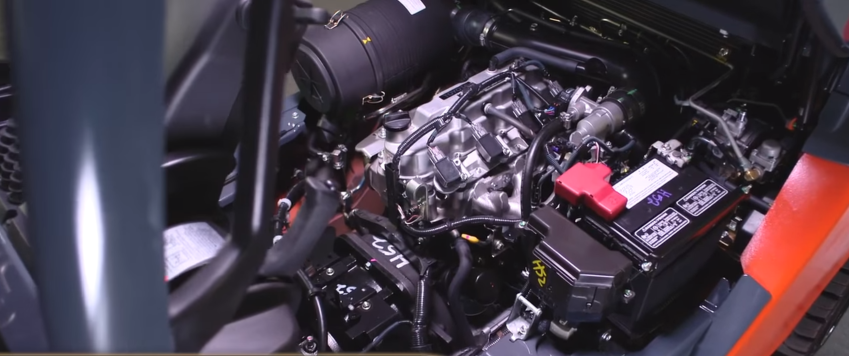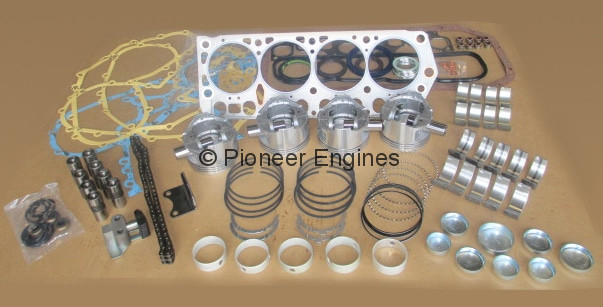Understanding the Mechanics Behind the 4Y Engine’s Power and Durability
Discovering the Various Sorts Of Engine: Which One Fits Your Needs?
In the quest to establish one of the most suitable engine type for your specific needs, it is crucial to review the distinctive characteristics and advantages of each option offered. Internal burning engines proceed to dominate due to their integrity, while electrical engines are gaining traction for their sustainability. Hybrid engines use a flexible concession, and diesel engines attract attention for their power in demanding applications. Furthermore, alternate gas engines present cutting-edge remedies, albeit with certain restrictions. Understanding your priorities will contribute in this decision-making process, causing an exploration of elements that might affect your choice.

Inner Burning Engines
Interior burning engines (ICEs) are the foundation of modern transport, powering a large range of lorries from vehicles to airplanes. These engines operate the principle of transforming fuel into mechanical energy with a series of controlled explosions within a combustion chamber. The most common sorts of ICEs consist of gasoline engines, diesel motor, and rotary engines, each designed to fulfill particular performance and effectiveness demands.
Gas engines usually utilize spark ignition, while diesel motor depend on compression ignition, resulting in distinctive differences in gas efficiency and power output (4y engine). Rotating engines, or Wankel engines, use a small layout and smooth operation, but are less commonly used in mainstream applications
ICEs have undertaken substantial improvements in innovation, including the intro of turbocharging and gas shot systems, which boost overall performance and performance. Regardless of their efficiency improvements, ICEs encounter enhancing examination as a result of their ecological impact, especially pertaining to greenhouse gas discharges. As the vehicle sector evolves, the future of ICEs stays a subject of debate, stabilizing efficiency, efficiency, and ecological factors to consider. However, they continue to play an important role in international transport facilities.
Electric Engines
As problems about environmental sustainability and nonrenewable fuel source dependency grow, electrical engines have arised as an engaging choice to inner burning engines. These engines make use of electric motors powered by batteries or gas cells, supplying a cleaner and extra efficient ways of propulsion.
Among the main advantages of electrical engines is their decreased discharges. Unlike standard engines that burn nonrenewable fuel sources, electric engines create no tailpipe exhausts, dramatically lowering air contamination and adding to improved public wellness. Additionally, the performance of electric motors often surpasses that of interior burning engines, converting a greater proportion of energy from the power resource right into usable power for activity.
Electric engines are likewise significant for their quiet operation, making them perfect for urban settings. 4y engine. The simplicity of their design leads to less relocating parts, which can lead to reduced maintenance costs and enhanced reliability gradually
However, obstacles continue to be, consisting of battery production effects, billing infrastructure, and array restrictions. Regardless of these obstacles, the expanding investment in electric lorry modern technology and renewable resource sources points toward an encouraging future for electric engines, placed to play a crucial duty in the change towards sustainable transport.
Hybrid Engines
Blending the benefits of both traditional and electrical inner burning engines, hybrid engines stand for a flexible solution in the mission for efficient and sustainable transportation. These engines incorporate a gas or diesel motor with an electric motor, allowing for enhanced fuel performance and decreased discharges compared to conventional lorries.
Crossbreed engines operate in numerous modes, utilizing the electric motor for low-speed driving and the internal burning engine for greater speeds or when even more power is required. This dynamic procedure not only boosts fuel economy however also adds to a smoother driving experience. Regenerative stopping is an additional essential feature, recording energy normally lost throughout stopping and redirecting it to charge the battery.

As customers significantly focus visit this web-site on eco-friendliness, crossbreed engines stick out as a functional selection, offering a reliable balance of efficiency, efficiency, and environmental duty. This versatility makes them appropriate for city commuting and long-distance travel alike.
Diesel Motor
Performance and power are hallmarks of diesel engines, which have actually long been preferred for their toughness and fuel economic climate. These engines run on the concept of compression ignition, where air is pressed to a heat prior to gas is injected, igniting it without the requirement for ignition system. This process allows diesel motor to achieve greater thermal performance compared to gas engines, equating into better fuel gas mileage and lower carbon dioxide emissions.
Diesel motor are particularly well-suited for sturdy applications such as trucks, buses, and commercial equipment, where torque and resilience are paramount. Their design typically consists of more powerful components to withstand the greater stress generated throughout operation, resulting in longer life span and reduced maintenance expenses.

Alternative Gas Engines
While diesel engines have lengthy controlled the landscape of heavy-duty source of power, alternate fuel engines are getting traction as viable alternatives for an extra sustainable future. These engines use a range of fuels, such as compressed all-natural gas (CNG), gas, hydrogen, and ethanol, aiming to decrease greenhouse gas exhausts and reliance on nonrenewable fuel sources.
One considerable advantage of different fuel engines is their possible to reduced carbon footprints. CNG engines discharge fewer toxins contrasted to typical diesel engines, making them suitable for urban click to find out more transportation systems and fleets looking for to improve air high quality. Ethanol, acquired from biomass, not only lowers discharges however also sustains farming economies.
Hydrogen gas cells stand for an innovative growth in this world, providing zero-emission power their website through a chain reaction in between hydrogen and oxygen. Difficulties such as infrastructure development and production prices continue to be challenges to widespread fostering.
Verdict
Inner burning engines provide dependability, while electrical engines prioritize sustainability and decreased maintenance. Crossbreed engines incorporate the benefits of both, enhancing effectiveness, whereas diesel engines give exceptional power and torque for sturdy applications.
Crossbreed engines offer a flexible compromise, and diesel engines stand out for their power in requiring applications. The most common types of ICEs include fuel engines, diesel engines, and rotating engines, each made to satisfy particular efficiency and performance needs.
Unlike standard engines that burn fossil fuels, electrical engines create absolutely no tailpipe exhausts, significantly decreasing air contamination and adding to enhanced public health and wellness.Hybrid engines run in several settings, using the electric motor for low-speed driving and the internal burning engine for higher speeds or when even more power is required. Hybrid engines combine the advantages of both, boosting effectiveness, whereas diesel engines supply exceptional power and torque for heavy-duty applications.